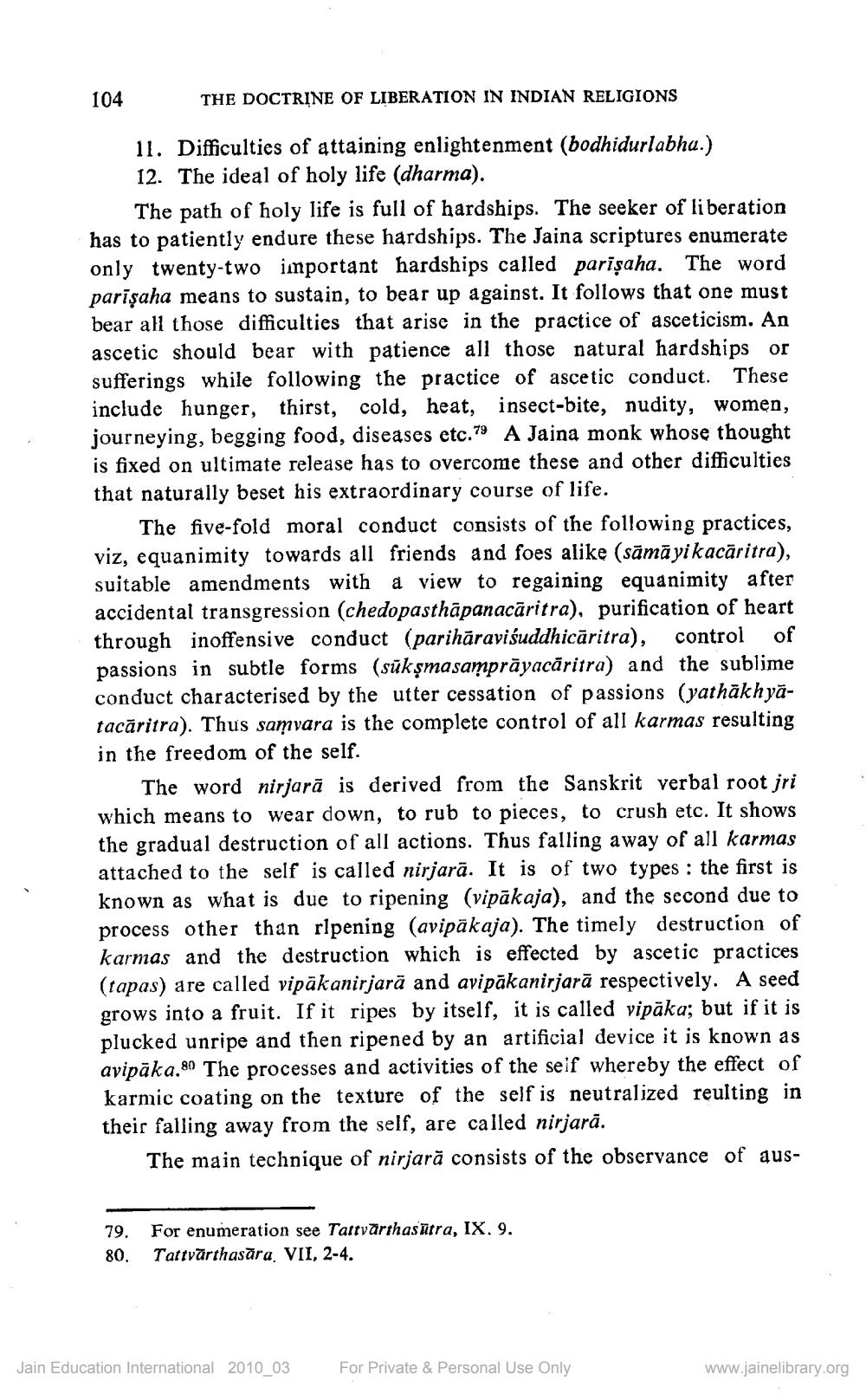________________
104
THE DOCTRINE OF LIBERATION IN INDIAN RELIGIONS
11. Difficulties of attaining enlightenment (bodhidurlabha.) 12. The ideal of holy life (dharma).
The path of holy life is full of hardships. The seeker of liberation has to patiently endure these hardships. The Jaina scriptures enumerate only twenty-two important hardships called parişaha. The word parişaha means to sustain, to bear up against. It follows that one must bear all those difficulties that arise in the practice of asceticism. An ascetic should bear with patience all those natural hardships or sufferings while following the practice of ascetic conduct. These include hunger, thirst, cold, heat, insect-bite, nudity, women, journeying, begging food, diseases etc.79 A Jaina monk whose thought is fixed on ultimate release has to overcome these and other difficulties that naturally beset his extraordinary course of life.
The five-fold moral conduct consists of the following practices, viz, equanimity towards all friends and foes alike (sāmāyikacāritra), suitable amendments with a view to regaining equanimity after accidental transgression (chedopasthāpanacāritra), purification of heart control of through inoffensive conduct (parihāraviśuddhicāritra), passions in subtle forms (sūkṣmasamprāyacāritra) and the sublime conduct characterised by the utter cessation of passions (yathakhyatacăritra). Thus samvara is the complete control of all karmas resulting in the freedom of the self.
79. 80.
The word nirjara is derived from the Sanskrit verbal root jri which means to wear down, to rub to pieces, to crush etc. It shows the gradual destruction of all actions. Thus falling away of all karmas attached to the self is called nirjara. It is of two types: the first is known as what is due to ripening (vipäkaja), and the second due to process other than rlpening (avipäkaja). The timely destruction of karmas and the destruction which is effected by ascetic practices (tapas) are called vipäkanirjarā and avipākanirjarā respectively. A seed grows into a fruit. If it ripes by itself, it is called vipäka; but if it is plucked unripe and then ripened by an artificial device it is known as avipaka.80 The processes and activities of the self whereby the effect of karmic coating on the texture of the self is neutralized reulting in their falling away from the self, are called nirjarā.
The main technique of nirjară consists of the observance of aus
For enumeration see Tattvärthasutra, IX. 9. Tattvärthasara, VII, 2-4.
Jain Education International 2010_03
For Private & Personal Use Only
www.jainelibrary.org




